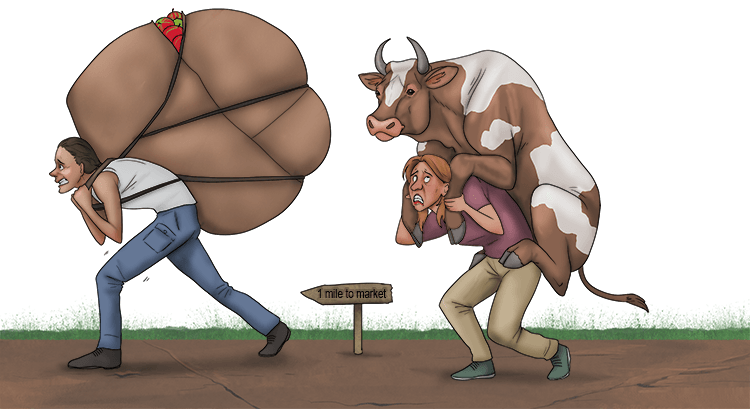Proximity to Market – the distance between a business and the customers it serves
(Pronounced prok-sim-i-tee)
To remember what proximity to market means use the following mnemonic:
It's approximately one mile to the market (proximity to market) from here; that's the distance between us and our customers.

Proximity to market is a term that refers to the physical distance between a business and its target market. It is an important factor to consider when choosing a location for a business, because if it is not situated near the target customers, chances are the business will not perform as well.
Some businesses can be more affected by proximity to market than others. For example, takeaways, corner shops and hairdressers need to have a close proximity to market. These businesses rely on easily accessible in-person interactions with customers in what are very competitive industries.
However, other businesses such as those that operate purely online have no requirement to be located close to their target market as they don’t rely on customers having any physical interaction with the business’s premises. Some businesses can operate anywhere in the world, and if they’re supplying services, they can reach their target market, like software providers.
All successful companies put great effort into finding the perfect locations for their outlets. An example of one is McDonalds. A big part of their rise to becoming one of the most successful fast-food chains in the world is their careful location selection process. McDonalds uses a variety of factors to choose the best locations for their restaurants, with market proximity being a key factor.
- Demographics: McDonalds looks for locations with a high population density, as this means that there will be a large pool of potential customers. Because of its widespread appeal and tailoring their menu to local needs, McDonalds is able to locate in a very diverse range of locations worldwide. One factor that McDonalds pays close attention to before signing off a location is its socioeconomic makeup. The local population must be deemed financially able to afford McDonalds food on a semi regular basis, or else it would not make the investment economically viable.
- Competition: Despite being set on locating near as many potential customers as possible, McDonalds avoids locating themselves too close to competition that may cannibalise their sales. This is a difficult prospect, but necessary to ensure the best sales possible.
- Accessibility: It’s no use being located in a densely populated area if the location is in an awkward place to get to (in the middle of a housing estate for example). Restaurants should be either very easily accessible by car (next to a roundabout) or by foot (in a city centre).




